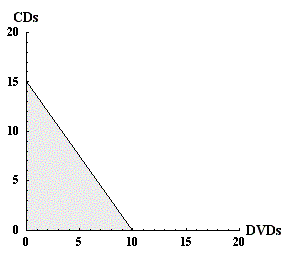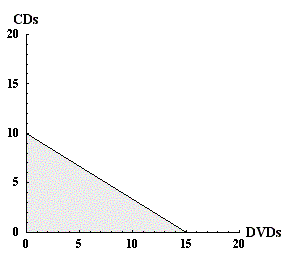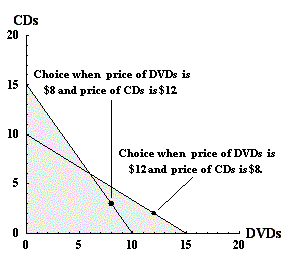|
|
| ||
Choice Example
The next exercise is a hypothetical choice problem that will be used in a later section to illustrate the use of models of choice. Imagine that you are awarded a certificate for $120 that you can use on just two types of items - DVDs and CDs - and that the relative prices are p1 = 12 for DVDs and p2 = 8 for CDs. Figure 2 shows all the alternative combinations of DVDs and CDs that you can purchase with the certificate at these prices. From the shaded budget set, imagine that you are asked which combination of DVDs and CDs you would select. Since the certificate that you have received has to be converted to a number of DVDs and CDs, and has no other use, you will want to use the entire award budget.

Figure 2: Budget for DVDs and CDs.
If the prices of DVDs and CDs are changed, so that DVDs cost $8 and CDs cost $12, then the budget set changes. Figure 3 shows the new budget set.

Imagine that once again you are asked which combination of DVDs and CDs you would choose. Your two choices for a combination of DVDs and CDs for the two budget sets in figures 2 and 3 might look something like the choices in figure 4.

Figure 4: Choices of DVDs and CDs for both budgets.
One of the fundamental ideas in economic models of consumer behavior is that choices like those in the example above result from preferences, and the preferences that generate a consumer's choices have some regularity properties. Properties of preferences are described in the next section.
| Copyright 2006 Experimental Economics Center. All rights reserved. | Send us feedback |



